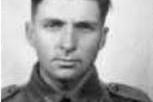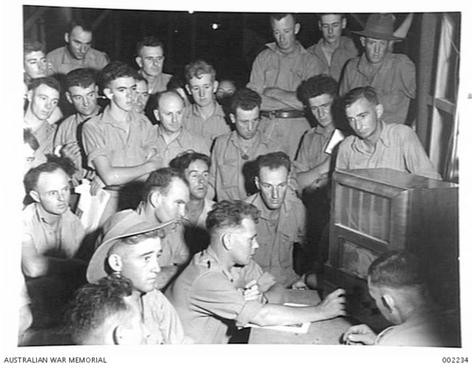General News
6 July, 2024
Veterans' Voices: William Allan Jochinke
With thanks: Sally Bertram, RSL Military History Library. Contact Sally at sj.bertram@hotmail.com or call 0409 351 940.

William Allan Jochinke was born in Ararat on October 28 1919
William’s father was G.F. Jochinke of Lake Boga.
He enlisted at Swan Hill on April 17 1940 in the Special Forces.
His Service Number was VX13734.
He was 20 years and six months of age and a labourer.
On April 30 1940 William was taken on strength at Caulfield Recruitment Reception and General Details Depot (RRD).
He was transferred to Infantry Training Battalion from RRD, and later was posted to 2/8 Battalion (Reinforcement) on September 15 1940 in Melbourne.
The 2/8 Infantry Battalion sailed overseas from Melbourne aboard HMAT S2 on September 15 1940.
They disembarked on October 12 in Palestine.
William was transferred to 2/8 Infantry Battalion on September 26 1940.
He was evacuated to 1 Australian General Hospital with tonsillitis and transferred to A-list.
He was discharged from hospital to 19 Infantry Training Battalion on November 13 1940 at Gaza Ridge, and taken on strength to 19 Battalion at Beik Jiya.
He was taken on strength on December 20 in Egypt, and embarked for Greece on March 25 1941.
At Alexandria, William was reported missing in action and transferred to the X-list on April 12 1941.
A report confirmed that William Allan Jochinke was a prisoner of war captured in Florina on April 14.
William would later make a statement in which he said he was captured on April 14 1941 in Greece.
The circumstances leading up to his capture were that during an order to retreat, he picked up a wounded man and tried to get through a village, but they were intercepted by Germans.
The wound man was J. Parker of 2/8 Infantry Battalion.
He was interned firstly in Stalag IIA from May to June 16 1941.
His second internment camp was Stalag XXA, where he was confined from June 17 1941 to January 29 1945.
His third camp was Stalag XI B until April 16 1945.
William described his general living conditions, accommodation and rations as poor in the camps.
The Red Cross had provided his clothing and footwear.
Provision for recreation, such as sport, entertainment, reading or any news, was bad.
He was employed doing farm work for 10 hours a day.
He said the behaviour of the internment camp staff was very bad, and he had no medical treatment while he was an internee.
William was not repatriated until April 26 1945.
As reported by 2 Echelon Base, as a recovered prisoner of war he arrived in the United Kingdom from Western Europe on April 26 1945.
William finally departed the United Kingdom on May 30 and disembarked in Sydney on July 7.
He was marched out to General Details Depot (GDD) Depot Vic Line of C Area on the same day.
On July 8 he was marched in from GDD and granted proficiency pay at Vic Line of Communication Area, 2nd Echelon, from April 26 1945.
William was evacuated to 107 ACD for discharge on August 4 1945.
He elected to be discharged on compassionate grounds, which occurred on August 8.
His period of service was from April 30 1940 to August 8 1945
William received the 1939-45 Star, the African Star, the Defence Medal, the War Medal and the HSM.

2/8th Infantry Battalion
The headquarters of the 2/8th Battalion opened at the Royal Melbourne Showgrounds on October 30 1939.
Members then moved to Puckapunyal to complete basic training.
The battalion departed Melbourne for service overseas on April 14 1940.
The battalion was originally formed as part of the 17th Brigade of the 6th Australian Division but in February it was decided to reorganise Australian infantry brigades along British lines, with three battalions instead of four per brigade.
This meant the 2/8 was eventually transferred to the 19th Brigade but remained part of the 6th Division.
Arriving in the Middle East on May 18 1940, the 2/8th trained in Palestine and Egypt in preparation for its first campaign, against the Italians in eastern Libya.
It played only a small role at Bardia (January 3-5 1941) but suffered the heaviest casualties of any Australian unit during the battle for Tobruk (January 21-22 1941) after having to attack a strong-point constructed around a line of dug-in tanks.
The 19th Brigade led the divisional advance onwards to Benghazi, which was reached in February.
The Italian forces surrendered the next day.
In early April 1941 the 2/8th was deployed to Greece.
It fought a fierce battle with German troops at Vevi in the country's north on April 11 and 12 but, overstretched and assailed by a vastly superior force, was forced to withdraw.
The battalion became disorganised and lost a great deal of its weapons and equipment, and many of its troops were separated.
It played no significant role in the rest of the campaign.